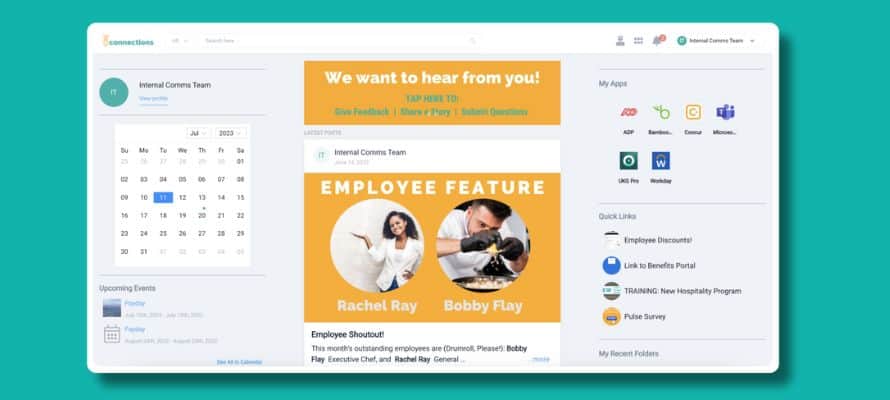
Your company intranet software can be a vital part of your channel mix. But are you still relying on an outdated intranet? Does that intranet still meet the needs of your diverse and modern workforce? What about your business objectives?
To make sure your intranet is still helping you, it might be time for an upgrade that will let you take advantage of the latest and greatest intranet functionality.
Modern businesses thrive on seamless internal communication, collaboration, and information sharing. At the heart of this interconnectedness is your company intranet software.
In simple terms, a company intranet is a private network that acts as a central hub for internal communications, document storage, training, and business updates. Intranets are only accessible to employees and authorized personnel, making it a secure and efficient platform for enhancing workplace productivity.
But not all intranet software is created equal. Some intranets are expensive and hard to update. Many intranets aren’t made to be mobile-accessible. But more modern company intranets are.
As the digital workplace evolves, having up-to-date and dynamic intranet software becomes essential for organizations aiming to stay competitive and adaptive in today’s ever-changing business landscape.
Like any technology, each has its own advantages and drawbacks. Let’s delve into the good, the bad, and the ugly of company intranet software.
Modern intranet tools can revolutionize internal communication. Social intranets and mobile intranets, in particular, have emerged as powerful solutions that address the limitations of traditional intranets.
[optin-monster slug=”m1b1dgfbipqf9ur3ezql” followrules=”true”]
Old-school intranets, while once cutting-edge, now struggle to keep pace with the rapidly evolving needs of the modern workplace. Often burdened with clunky interfaces and limited functionality, these older intranets fail to capture employees’ attention and engagement. Navigating through complex menus and searching for relevant information can become frustrating and time-consuming, hampering overall productivity. These traditional intranets often lack mobile responsiveness, preventing remote workers or deskles employees from easily accessing them.
In some cases, outdated intranets can become counterproductive, leading to disengagement and employee frustration. A poorly designed or underutilized intranet can accumulate outdated and irrelevant content, cluttering the digital workspace and making it challenging to find essential information. If employees do not see value in using the intranet, they may resort to alternative means of communication (learn more about Shadow IT).
So, how do you know if it’s time for you to upgrade your company intranet software? Luckily, there are a few red flags to watch for:
When you start shopping for new company intranet software, look for partners that check all the right boxes. They need to be user-friendly, mobile accessible, easy to manage, and cost-effective as you continue to grow.
But more importantly, intranets need to support your company’s communication goals. Is the intranet you choose going to allow you to better engage your workforce and give you the tools you need to maintain active usage? Does the intranet integrate with the right technology and fit in with the rest of your internal comms channels?
By carefully evaluating intranet providers, you’ll be surprised how many modern intranet solutions there are and wonder why it took you so long to make the switch.
[optin-monster slug=”gqorn0natkqgyrtjvr6i” followrules=”true”]